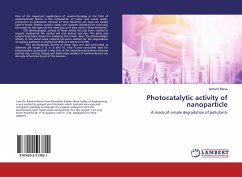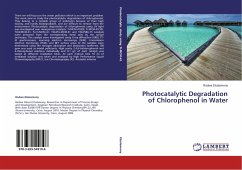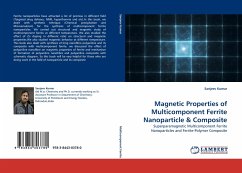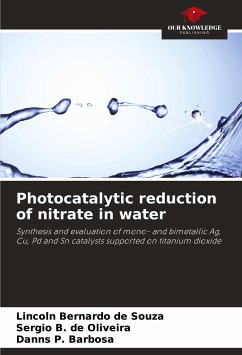
Photocatalytic activity of nanoparticle
A mode of simple degradation of pollutants
Versandkostenfrei!
Versandfertig in 6-10 Tagen
27,99 €
inkl. MwSt.

PAYBACK Punkte
14 °P sammeln!
One of the important applications of nanotechnology in the field of environmental factors is the remediation of water and waste water, prevention of pollutants, removal of toxic elements, etc. Dyes are widely used in textile, leather, plastics, paper and cosmetic industries for colouring the products.Azo dyes are the most group of dyes used in these industries. The photocatalytic activity of these oxides has also been studied in organic compound like methyl red and phenol red dye. The plots and graphs have been drawn for analyzing the results. Also, the photocatalytic activity of the metal oxi...
One of the important applications of nanotechnology in the field of environmental factors is the remediation of water and waste water, prevention of pollutants, removal of toxic elements, etc. Dyes are widely used in textile, leather, plastics, paper and cosmetic industries for colouring the products.Azo dyes are the most group of dyes used in these industries. The photocatalytic activity of these oxides has also been studied in organic compound like methyl red and phenol red dye. The plots and graphs have been drawn for analyzing the results. Also, the photocatalytic activity of the metal oxide material has been studied for the degradation of organic pollutant as methyl red (MR) and phenol red (PR). The photocatalytic activity of these dyes was also performed at different pH range 2, 4, 6. 8 and 10. And it was concluded that for photocatalytic process pH is also one of the important parameters because particle size, surface charge and band edge position of semiconductors are strongly influenced by pH of the solution.














